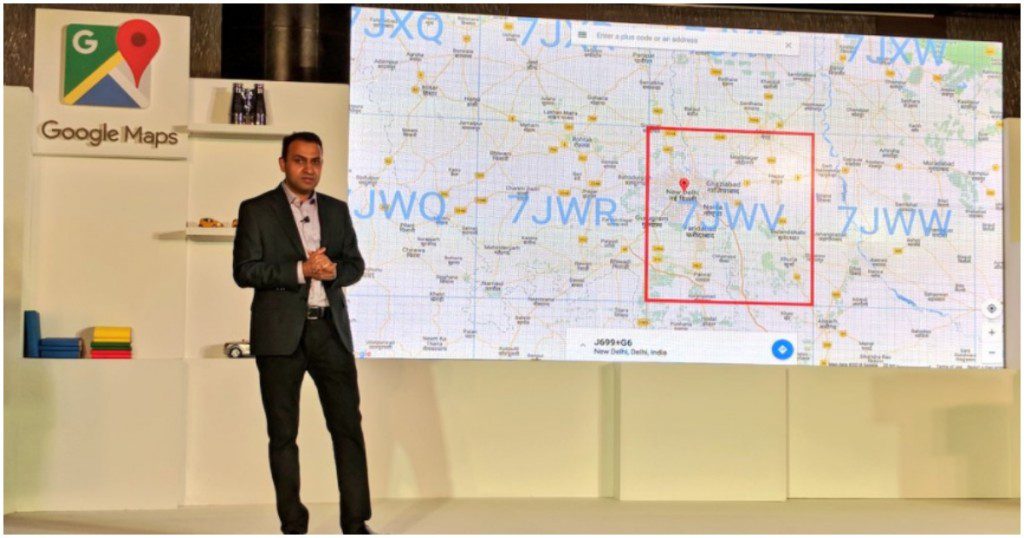India’s street addresses can often be confusing and messy — they can refer to houses that have no numbers, they can include street names that have long been changed, and even incorporate living things (“behind big Banyan tree that’s to the left of the Ganesh temple”). Now Google’s attempting to fix all this confusion through something it calls Plus Codes.
“A plus code is like a street address for people or places that don’t have one,” says Google. “Plus codes give addresses to everyone, everywhere, allowing them to receive deliveries, access emergency services and register to vote,” it adds.

A plus code functions much like a pin code, but for a much smaller area. While pin codes are six digit numbers, plus codes are 10 characters long. The first 4 characters identify broad areas, roughly 100 square kilometers each. The next 6 characters allow for much finer granularity — they allow areas of 14 square meters to be identified, which is roughly the same size as half a basketball court. An optional 11th character gives as much precision as 3*3 meters — the size of a small car. Google’s mapped this out for the entire planet, giving each bit of land a unique address.

Google says these codes are free to use, and the technology behind them is open source. Users can find out the plus code for an area by pressing down on Google maps. Google will show the plus code of the area on the bottom right corner. These codes can then be copied and shared with other users through messages. Once someone else receives the code, they can simply enter it into Google maps and receive the exact location.

There could be plenty of applications for such a service. It could come in handy for deliveries, especially in Tier 2 and Tier 3 cities, where addresses are ambiguous and Google Maps landmarks are sparse. The codes can also come in handy during natural disasters, allowing relief and rescue teams access to directions. Plus codes can be easier to use and share than traditional location measures — latitude and longitude values, for instance, can be two numbers of 8 digits each, and also have positive and negative values.
Google says it doesn’t intend for plus codes to replace street addresses. “Street addresses work well where they exist. Where they don’t work is where streets are not named or where there are no streets at all. Plus codes are a cheap and easy way to share addresses in those cases,” it adds. And Plus Codes are an elegant, typically-Google solution — there are only so many unique spots on our planet, and it’s about time we got global, standardized names for them all.